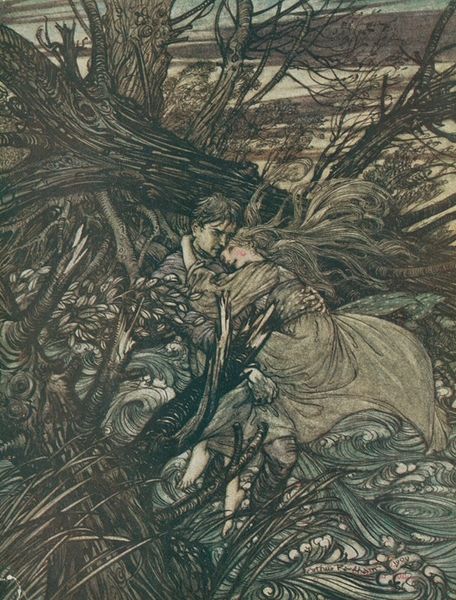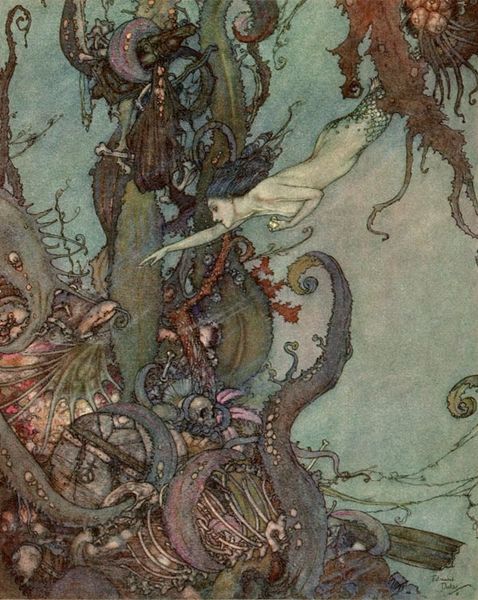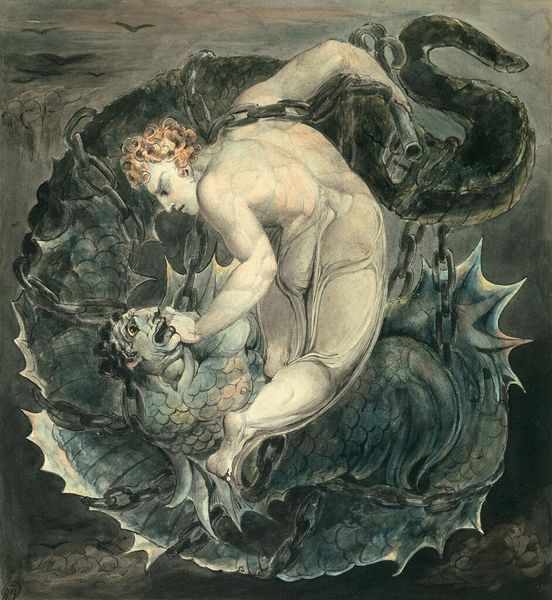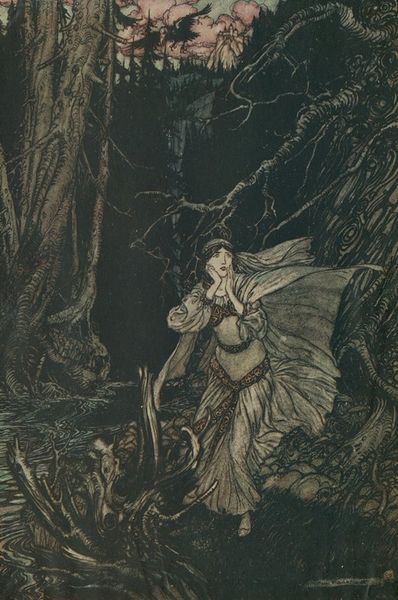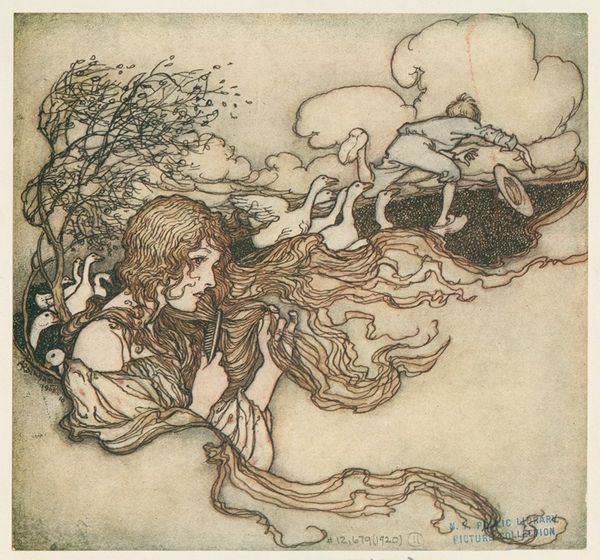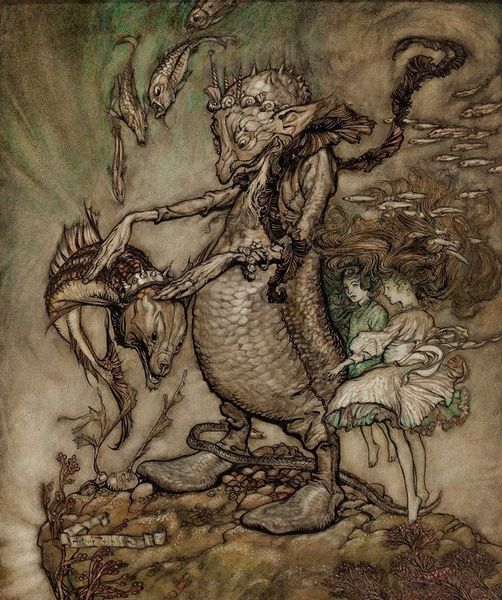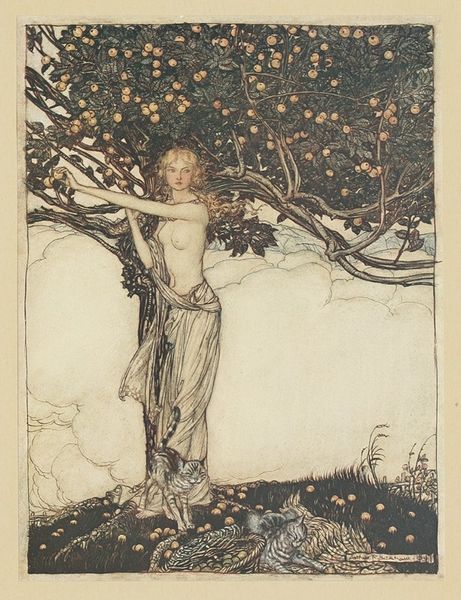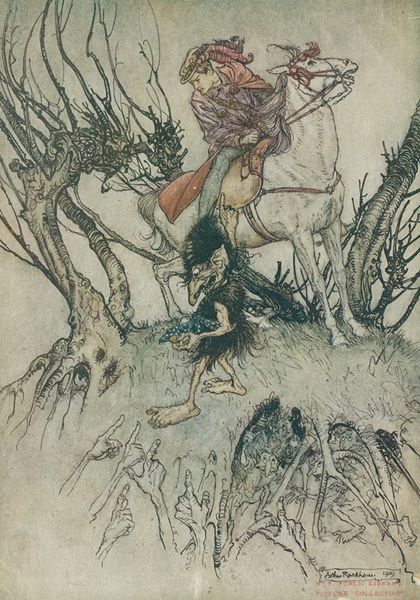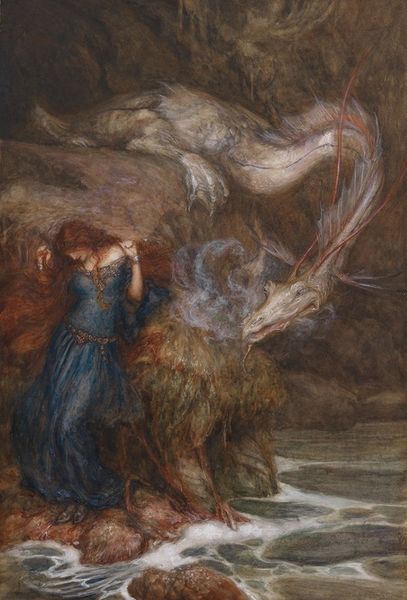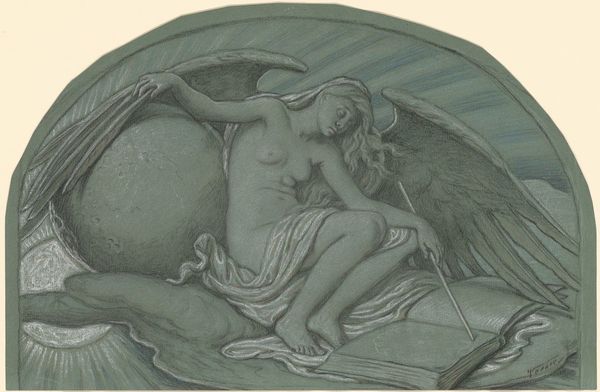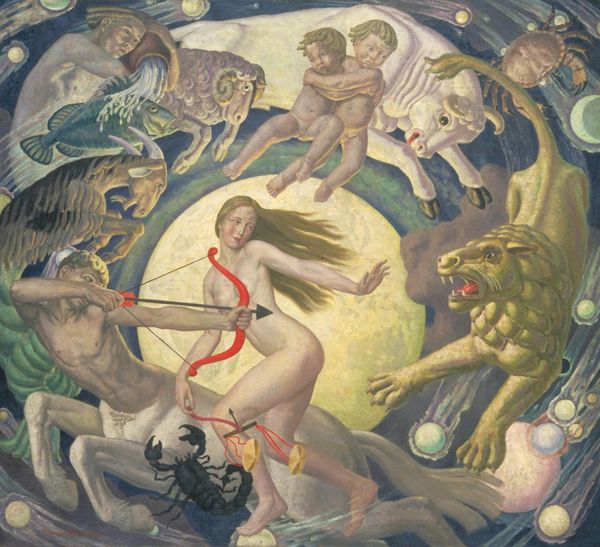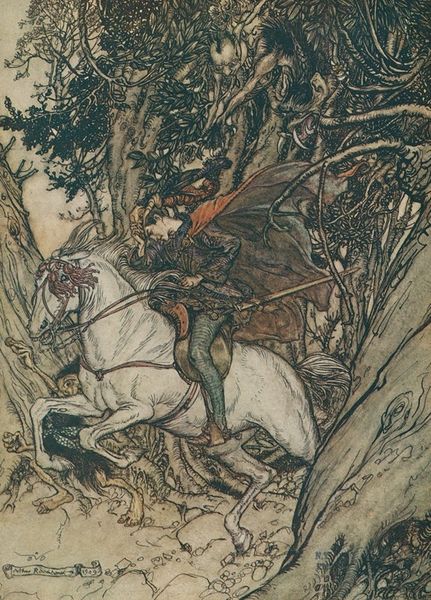
Copyright: Public Domain: Artvee
Editor: Arthur Rackham's 1906 drawing, "There now arose a mighty storm and he was tossed this way and that," really throws you into the thick of it, doesn't it? The choppy water and dramatic winds almost give a feeling of seasickness! How do you interpret this kind of dynamic scene? Curator: I think Rackham is less interested in the actual storm, and more invested in depicting the turbulent social and political climate of the early 20th century. It reflects the anxiety and uncertainty felt throughout Europe as the old world order began to crumble, heading toward the First World War. Who is this tiny figure in a dangerous ocean? Editor: It looks like a child alone in the storm! Is it meant to symbolize innocence, perhaps, being tested? Curator: Precisely! The child figure, exposed to the elements, could represent a nation adrift, or perhaps a generation facing unprecedented challenges. The powerful storm can be seen as a metaphor for industrialization or political revolution threatening to uproot traditional life, questioning cultural values, and visualizing how power affected vulnerability in his society. Does this fit the Romantic style, do you think? Editor: Yes, because it captures so well a sense of awe, terror and powerlessness in the face of larger forces, natural or man-made. Curator: Exactly, the image is deeply intertwined with societal concerns and uses symbolic language to comment on them, reminding us how art functions as a reflection of, and intervention within, the world around it. It seems that illustrations such as these gain much power being associated with printed literature, as was his style at the time. Editor: I never considered that the drawing was reflecting political and cultural issues! This puts a completely different spin on how I view the role of this art within a larger social structure. Thanks for sharing this point!
Comments
No comments
Be the first to comment and join the conversation on the ultimate creative platform.
